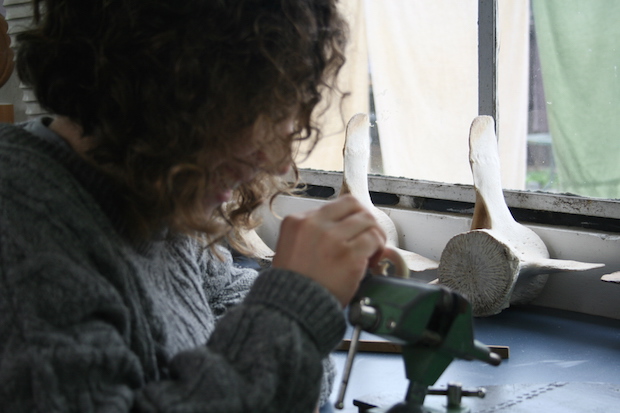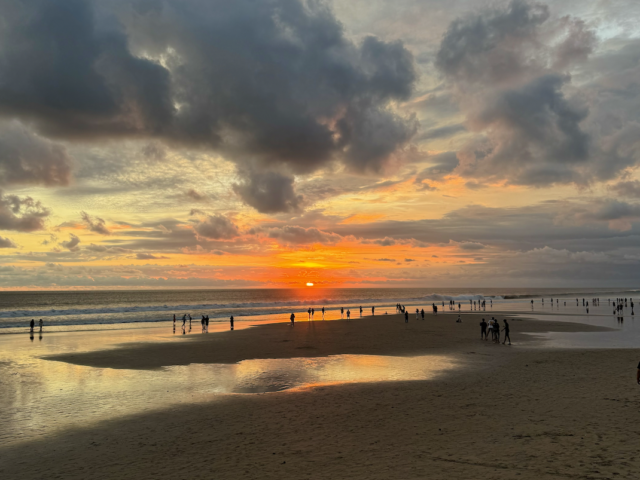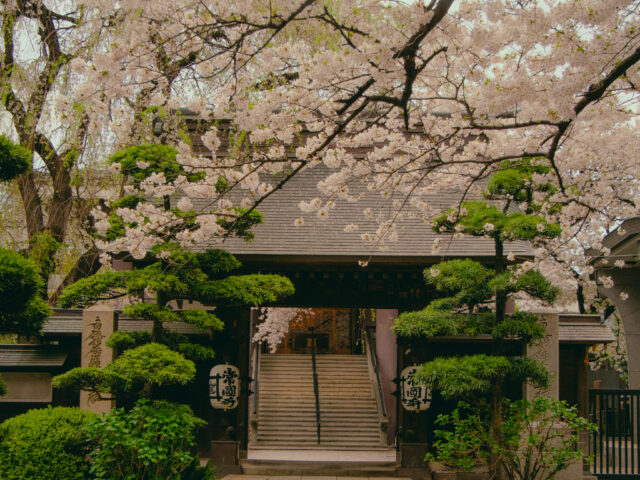TEAN gave me the opportunity to visit a Maori bone carver and create my own carved pendant necklace. This was a huge amount of fun, but it also gave me insight into a very important part of Maori culture and tradition. Even when I walked around campus, I saw many people wearing stone or bone carvings on necklaces, so it is clear that these are important to the culture even today. With a little digging I found that the designs are steeped in symbolism and valued as precious treasures, or taonga.

Carving was an important tradition in Maori culture, as the Maori people had no written language, artwork encapsulated beliefs and carried stories through time. Carvings worn around the neck could serve a variety of purposes, including ornamentation, identification, protection, self-affirmation, and award. Traditionally, carvings are either made out of whalebone or pounamu. When bone is worn against skin, it begins to change color. This represents the person’s spirit being absorbed into the carving. In this way, a carving carries the spirit of those who have worn it, and they are often passed down through generations, carrying the spirits of ancestors. Pounamu, a type of jade also called New Zealand greenstone, is found only in a few places on the western coast of the South Island. Pounamu carvings, however, can be found throughout New Zealand, and the strong, beautiful stone highly valued by the Maori. There are several types of pounamu, categorized by the green appearance and the presence of flecks.

According to legend, pounamu was once a woman named Waitaiki. She was very beautiful, and one day, Poutini, son of Tangaroa the sea god, carried her away down the South Island coast. Her husband Tama-ahua pursued them to the Arahura River, where Poutini turned Waitaiki into greenstone to keep her there. Poutini is considered to be the guardian of pounamu.
There are many different patterns of carving that are commonly seen. The carving I made combines two of the most popular, the koru and the fish hook. Here are some of the most common carvings and their meanings.
Hei matau or fish hook
(Hei means “worn around the neck”). The sea and fishing have always been important to the Maori, and a fish hook symbolizes prosperity, life, and well-being. It can also bring safety when traveling over water.
Pikorua or single twist
The twist is the path of life, indicating eternity. This shape symbolizes connectedness or friendship as two people’s souls are joined for eternity, even though they may be apart at times.
Double or triple twist
This symbolizes an eternal bond of cultures or peoples, rather than individuals.
Koru or spiral
Representing an unfurling silver fern frond, this swirl symbolizes the cycle of life, new beginnings, and fresh starts. The meaning has also expanded to include harmony, peace, tranquility, personal or spiritual growth, awakening, and change.
Manaia
This creature has a bird head, human body, and fish tail. It is a messenger and intermediary with the spirit world, and can be a protector. It also represents the balance of heaven, earth, and sea.
Hei Tiki
This figure has traditionally been a good luck charm. It can also indicate ancestral pride, wisdom and clarity, and character. It is often handed through generations.
Whale tail or dolphin
Whales were important to early Maori as they arrived in New Zealand. The whale tail represents protection and guidance, especially for seafarers. Dolphins indicate a free spirit and closeness to nature.
Though these are the most common figures I have come across, there are many other symbols present in Maori carving as well. Carvings are made for the person who wears them, and they are believed to have a spirit of their own. With the long tradition and the dedication that goes into carving them, it is easy to see why they are treasured.
Elizabeth Jacobsen is a Global Ambassador and student at Williams College. She is a program alum and studied abroad with TEAN in Christchurch, New Zealand.
Sources









